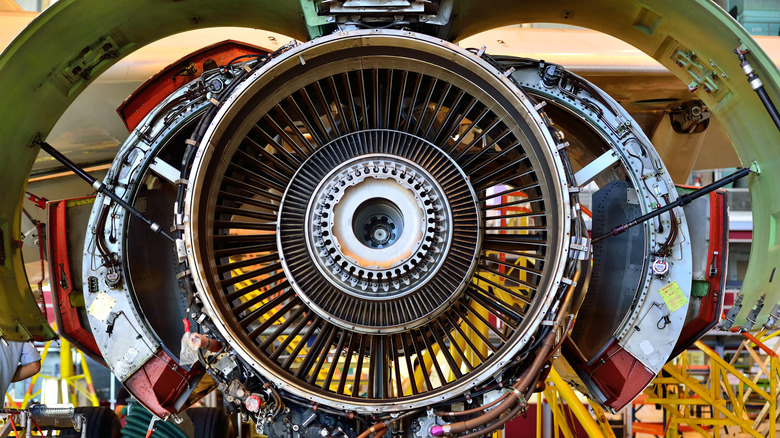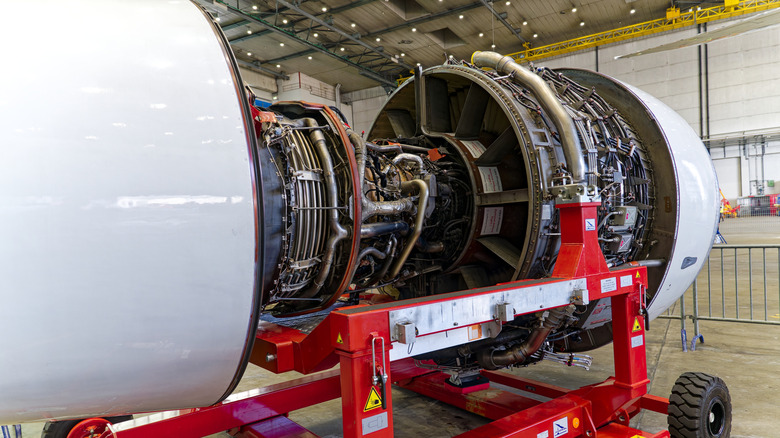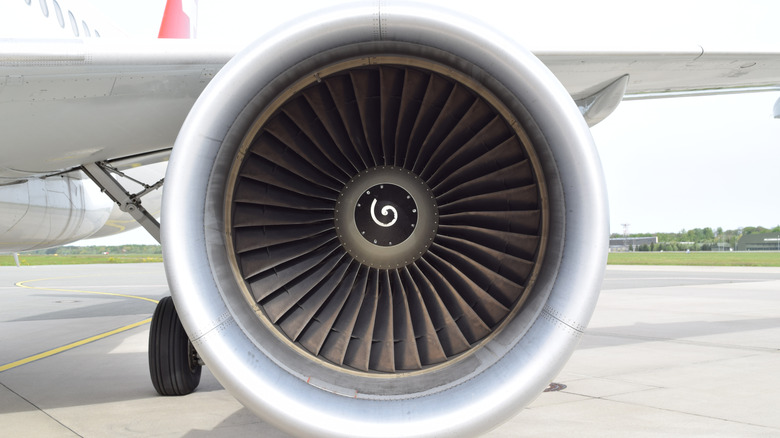What Is The Most Popular Jet Engine And Why Is It Found On So Many Planes?
The transportation industry has grown tremendously over the past two hundred years. In the 1800s, sailing between the United Kingdom and Australia would take months. By the 1900s, this duration had already been reduced to a matter of days, thanks to airplanes. Today, only a mere 19 to 25 hours, depending on the airline, separates a flight between these two countries. Airplanes have done much to make the world smaller, and at the rate things are progressing, it will become even smaller. Today, advancements in aircraft technology are going steady, with companies such as Boeing developing the next stage of domestic and commercial airplanes with their 777X planes, which is arguably the largest twin-engine commercial jet, and General Electric (GE) working on their latest turbofan, the GE9X, said to be the most sophisticated turbofan ever built.
While these two companies continue to develop the next leap, several products from other manufacturers are keeping the aircraft transport system afloat. One notable example is the CFM56 family of engines, which is the most popular turbofan in aviation history. So, who makes this engine, and why is it present on so many planes?
The CFM56 is more than half a century old
The CFM56 family of engines was developed through a joint venture between aviation companies GE and Safran Aircraft Engines. This venture, known as CFM International, became official in 1974, and its agreement was renewed in 2008 to extend it to 2040. Although the agreement was signed in the mid-'70s, the two companies had been exploring ways to develop an engine suitable for the civil market and had actually been working together since 1969. By 1971, heads from GE and Société Nationale d'Études et de Construction de Moteurs d'Aviation, the predecessor to Safran Aircraft Engines, would sign a collaboration agreement to develop an engine powerful enough to power single-aisle commercial airplanes.
By 1974, the two companies had a working CFM56-2 engine, which passed its first ground test with great success. That same year, CFM International was formed, and only five years later, the CFM56 turbofan was complete and looking for aircraft to power. In April 1982, a Savannah-bound Delta DC-8-71 flying from Atlanta would be the first commercial plane to feature CFM56 engines as its turbofans, and by 2005, CFM International would have produced a total of 15,000 engines.
What makes the CFM56 so popular
For an engine that has been around for five decades, the CFM56 still holds strong against its peers. The engine has been in service for 40 years, with over 33,000 turbofans delivered to commercial and military operators. The family of engines is rated at between 18,500 and 33,000 pounds of thrust. On planes like the Airbus A318ceo, the engines produce between 24,500 and 32,900 pounds of thrust, while on the Boeing P-8 Poseidon , they generate between 27,980 and 30,000 pounds.
The engine family includes several turbofans, such as the CFM56-5B, which powers the A320ceo family of aircraft, and the CFM56-7B, which is the exclusive turbofan for the Boeing 737 Next-Generation line. These engines are popular because they are powerful, durable, reliable, and easy to maintain. Each turbofan is designed to lower operational costs, includes an abundance of surplus spare parts available at CFM International, and boasts proven performance refined over the decades. With the partnership between GE and Safran Aircraft Engines extending until 2040, only the sky is the limit for what these turbofans will be able to achieve.


